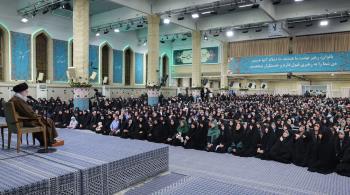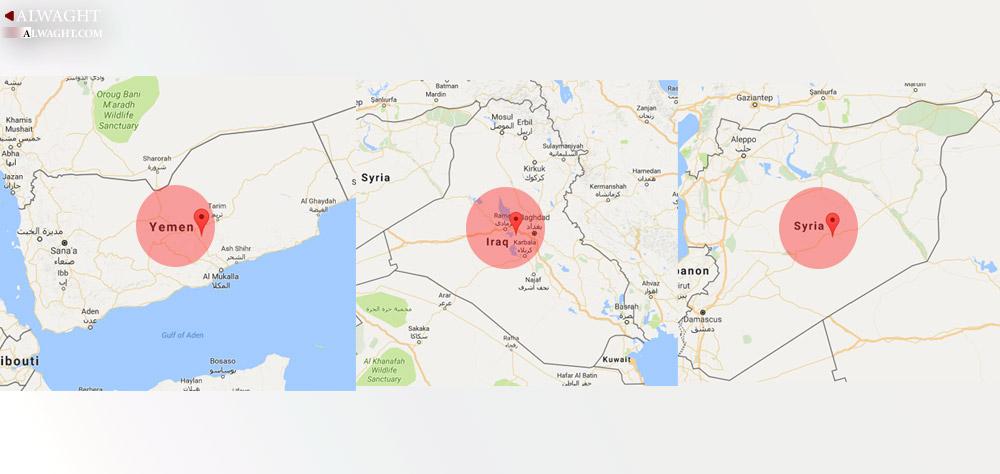Alwaght- The struggle to preserve the sovereign independence and unity of the regional countries makes up a major part of the Iranian strategic competition with the Western-Arab axis spearheaded by the US and Saudi Arabia. The “Greater Middle East” or simply new Middle East, a plan that was raised by the President George W. Bush administration since 2005 and became a common term in the global politics vocabulary, was just one of White House’s goals in the West Asian region that ostensibly sought to ease the border, sectarian, and religious tensions in this region through redrawing the political and ethnic geography of the region.
But the real goals of redesigning borders of the West Asia go beyond the simple expressions, mainly aiming at preserving the Israeli security and also perennializing the multifaceted American presence in the region. The implementation of the plan failed to gain success while former President Bush was in office, and after the Islamic awakening that followed the Arab uprisings of 2011, the former President Barack Obama gave the plan a new shot, and the analysts insist that it is unlikely that during the President Donald Trump’s term in office the scheme will be followed.
What countries are targeted by the plan?
Syria
The American designers of the plot seek partition Syria to three Sunni, Alawite, and Christian parts. The end behind such a measure is providing the lasting Israeli security through downsizing Syria and thus cutting the links between it and Lebanon. But Syria and Iran strongly reacted to the design, having in mind that if this plan is implemented, Lebanon’s Hezbollah will be pushed into isolation and will be seriously vulnerable. The American project has drawn the Saudi and Turkish supports while Damascus has been engaged in a devastating battle with terrorism at home.
However, the partition program launched by the Western-Arab camp now looks more foiled than ever following a set of triumphs made by forces of President Basher al-Assad and his allies who in a show of strength recaptured the northern city of Aleppo from terrorists. In fact, the Aleppo breakthrough sharpened the Syrian government’s optimism about liberating further terrorist-held areas of the country including Raqqa, Idlib, Deir ez-Zor, and that will mean more guaranteed preservation of the national Syria sovereignty.
The resounding Aleppo success of the Syrian forces over the militants brought Russia, Iran, and Turkey to the negotiating table, resulting in an important accord to push the warring Syrian sides to restart their peace negotiations but this time in Astana, Kazakhstan, rather than Geneva, Switzerland. The new round of talks took as it basis the United Nations resolution that emphasized on a united and sovereign Syria. This, of course, meant that Iran’s strategy which puts premium on a united Syria in any peace initiative has an upper hand.
Iraq
Perhaps Iraq is the center of focus of the US-eyed Greater Middle East plan. Showing advocacy to independence of Iraq’s Kurdistan region and sowing divisions between Kurdish government in Erbil and the central Iraqi government in Baghdad are primary measures Washington tries to take in the long run to help break up Iraq and prepare the ground for enforcement of the new Middle East plot.
The US Senate Committee on Armed Services in its defense bill published on 27 April, 2015 recognized the Sunni and Kurdish militias as a “country.” The bill proposed that at least 25 percent of the total $715 million in anti-ISIS American aids to Iraq be offered to the two militant groups. The Senate's move reflected the fact that the US was discontented with what was happening inside Iraq and around it, and eyed some changes to the conditions.
On the other side, raising the recognition by the Senate laid bare the fact that the US just under the cover of fighting the ISIS wants to conclude some more complicated regional plans. Separating Iraq as a strategic member from the Iran-led Axis of Resistance in the region has been high on the US agenda. If successfully implemented, the plan will undermine the Shiites' strength in Iraq and the region. But to the US frustration, the Shiite, Sunni, and Kurdish mobilization of joint forces to confront ISIS and retake the seized areas of the country, especially the northern city of Mosul, has considerably slowed down the Iraqi motion toward split. Additional successes along with the economic crisis hitting the Kurdistan region pushed the Iraqi parties to further convergence to coexist in a united Iraq.
Yemen
A similar partition plan is also eyed for Yemen. The US unceasingly follows Yemen’s split. This is actually an integral segment of Washington’s West Asian strategy, though its implementation procedure is left to the Saudis. Yemen is of highly strategic position near Bab-el-Mandeb Strait that in turn is of decisive significance for Riyadh in terms of its oil exportation to the international markets. Furthermore, control over the strait will mean dominating the commercial transportation sea route that allows the ships to sail to Europe and America through Suez Canal and then the Mediterranean. Bab-el-Mandeb is also crucial to the Israeli regime that is surrounded by several Arab countries that once fought a war against Tel Aviv. But Yemen’s uprising that gave rise to anti-Western forces in the country’s political scene struck hard Tel Aviv and Riyadh’s sphere of security.
Yemen's revolution stimulated the two sides to limit the range of damages that could hit them as a result of the Yemeni Ansarullah movement’s control over the Bab-el-Mandeb Strait. Yemen breakup is one of the scenarios toward this end. Waging a Saudi-led Arab war against Yemen and relocating the Western and Arab embassies from the capital Sana’a to Aden in south, where the ousted president Abdrabbuh Mansur Hadi is propped up by the invaders in the face of the revolutionary forces, are measures ushering in the future project for Yemen.
The Saudi leaders were hopeful that division scheme will break Yemen into six smaller parts, with Hadhramaut and Al Mahrah provinces, both in extreme south of Yemen, going under the Saudi rule step by step. But despite massive bloodshed, the kingdom faced rigid popular resistance. The military campaign began to deliver the reverse, with not only Riyadh failing to federalize Yemen but also the Yemeni army and popular forces crossing the border into the Saudi territories and seizing control of parts of three provinces of Najran, Asir, and Jizan.
The failure now pushes Riyadh against a dead end in the war after bearing the brunt of a costly military campaign. The countries in its coalition reject to take more active role in the aggression, and seek a way out of the Yemen quagmire. Such a decline makes Yemen split project even more difficult to carry out.



























